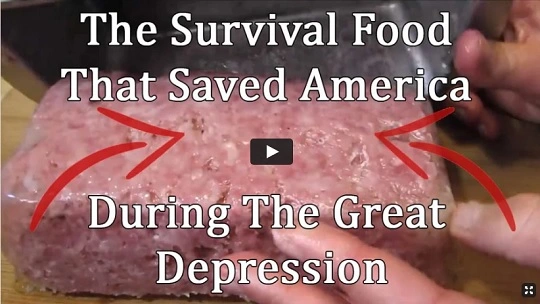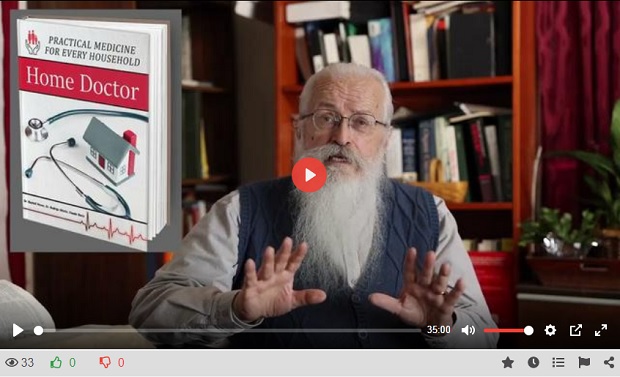For hundreds of years, maybe even longer, our grannies and grandfathers relied on simple household items to heal. For that purpose, they picked different natural antibiotics, which they mostly found in home, gardens or meadows and woods nearby.
Much of this came out of necessity. Rather than using an antibacterial facial scrub, our Nanas massaged honey deep into their pores. By using proven old home remedies, we can treat and cure various health problems and do a lot for our health avoiding unpleasant medications side effects, too.
Some of these remedies even date back thousands of years, as far back as the tribes of Central and South America. Now, perhaps with the advent of slow-living, these products are slipping back into style. Many appreciate the remedies for their simplicity, price, or their low-impact on the earth. Rather than spend $8 on sea salt spray, you can simple mix some salt with water and spritz it into your hair. You save money as well as a package.
In honor of our ancestors, we’ve gathered some of our favorite time-honored traditions. These timeless products have earned a permanent place in our pantries.
Garlic
Raw garlic when crushed or chewed contains a compound called allicin — which has similar properties to penicillin.
This superfood member of the onion family is antibiotic, anti-inflammatory, anti-viral, anti-parasitic, anti-fungal, and antioxidant (mopping up free radicals that have been proven to cause cancer).
For more than seven millennia, it has been used internally and externally to treat mild illness to serious diseases.
Everything from inflammation to colds to serious infections is minimized and/or obliterated with the addition of garlic and for those who don’t enjoy the taste, there are supplements as well. Check into “aged” garlic supplements for the best results.
Garlic is not only potent, it contains a host of vitamins, nutrients, and minerals that are beneficial to total body wellness. Not to mention the cost is pennies in comparison to doctor visits and prescriptions!
Unlike chemical antibiotics that kill millions of friendly bacteria your body needs, its only goal is bacteria and microorganisms. Garlic also encourages and increases the level of healthy bacteria. It is a powerful antifungal agent and destroys any antigen, pathogen, and harmful disease-causing microorganisms.
- Garlic packs a punch with phytochemicals and healing sulfur components. These sulfur compounds even chelate toxic heavy metals (like lead & cadmium), binding with them for excretion out of the body.
- It has antibacterial, anti-fungal, and even antiviral qualities.
- It promotes the growth of healthy intestinal microflora by acting as a prebiotic (food for probiotics).
- Garlic helps keep fats from oxidizing.
- Garlic acts as a strong antioxidant and guards against DNA damage.
- It protects against radiation & sunlight damage.
- Garlic fights worms and parasites.
- It benefits digestion, which is good for the whole body.
- It contains many nutrients such as vitamins (C, B1, B2, B3), minerals (calcium, folate, iron, magnesium, manganese, phosphorus, potassium, selenium, zinc, and phytochemicals (Allicin, beta-carotene, beta-sitosterol, caffeic acid, chlorogenic acid, diallyl-disulfide, ferulic acid, geraniol, kaempferol, linalool, oleanolic acid, p-coumaric acid, phloroglucinol, phytic acid, quercetin, rutin, s-allyl-cysteine, saponin, sinapic acid, & stigmasterol).
Honey
Herbalists consider honey as one of the best natural antibiotics. It also contains antimicrobial, anti-inflammatory and antiseptic properties. A 2014 study presented at a meeting of the American Chemical Society found that honey has the ability to fight infection on multiple levels, making it more difficult for bacteria to develop resistance to it.
Ancient Romans used honey on the battlefield to treat wounds and prevent infection.
Civilizations all over the world continue to consider honey one of the best natural antibiotics, antimicrobials, anti-inflammatories, and antiseptics known to man after thousands of years.
Its unique combination of hydrogen peroxide, acidity, osmotic effect, high sugar concentration and polyphenols help kill bacterial cells. To get the antibiotic benefit of honey, always use raw, organic honey.
Olive leaf extract
This substance has been used for a number of centuries to battle bacterial infections and is now currently being used as well to fight MRSA infections in some European hospitals. It provides immune system support while fighting antibiotic-resistant infections. Olive leaf extract also has anti-inflammatory properties. Additionally, it exhibits free-radical scavenging abilities.
- You can make olive leaf extract for external use at home. Put a handful of finely chopped fresh olive leaves into a glass jar with a lid. Pour vodka over the leaves until they are completely covered. Close the lid and keep the jar in a dark place for 4 to 5 weeks. Using a cheesecloth, strain the liquid into another glass jar and your homemade olive leaf extract is ready to use.
- Another option is to take olive leaf extract in supplement form. 250 to 500 mg capsules twice daily is the standard dosage. However, consult a doctor before taking the supplement.
Turmeric
This herb has been used in Ayurvedic and Chinese medicine for many thousands of years to treat a wide range of infections. The antibacterial and anti-inflammatory qualities have been known to be highly effective in the treatment of bacterial infections. The antimicrobial activity of curcumin against helicobacter pylori showed positive results. Curcumin is the active ingredient in turmeric.
- Mix 1 tablespoon of turmeric powder and 5 to 6 tablespoons of honey. Store it in an airtight jar. Have ½ teaspoon of this mixture twice daily.
- You can also take turmeric supplements of 400 to 600 mg, twice daily. However, consult your doctor first.
Echinacea
With similar effects to garlic, it was traditionally used to treat open wounds, as well as blood poisoning, diphtheria and other bacteria-related illnesses. Echinacea is well tolerated and able to stimulate the immune system by naturally boosting infection fighters in your blood stream. Native to North America, Echinacea has been used for centuries in tribal medicine to treat pain and sickness.
Unlike garlic, this antibacterial, anti-fungal, anti-viral solution is generally used at the first signs of illness and should not be taken for more than ten days. It is available in liquid and capsule form.
Echinacea is also used against many other infections including the urinary tract infections, vaginal yeast infections, genital herpes, bloodstream infections (septicemia), gum disease, tonsillitis, streptococcus infections, syphilis, typhoid, malaria, and diphtheria.
Cayenne peppers
Cayenne peppers are the most powerful circulation stimulators. They just send their antibiotic properties to fight the disease where it is mostly needed.
Onion
Onion is garlic’s closest relative and it has a similar but milder action. Together they create a strong fighting duo.
Raw apple cider vinegar
The far-reaching benefits of daily doses of apple cider vinegar (ACV) include antibiotic and antiseptic properties, naturally alkalizing your system, and can aid you in everything from managing your weight to lowering cholesterol and your risk of cancer.
A chemical-free astringent, ACV can be used topically to disinfect and sterilize.
Oregano oil
Oil of oregano is considered anti-microbial, antibacterial, anti-parasitic, anti-viral, and anti-fungal.
It can be used internally and externally in the treatment of wounds, respiratory problems, digestive upset, and even the common cold.
- For treating foot or nail infections, add a few teaspoons of oregano oil to a tub filled with warm water. Soak your feet in it for a few minutes daily for a week.
- For sinus and other upper respiratory infections, put a few drops of the oil of oregano in a pot of boiling water and inhale the steam. Do this once daily until you get rid of the infection.
Colloidal Silver
While colloidal silver is highly antibiotic in nature, I suggest only using it for external uses such as gargling, ear infections like swimmers’ ear and skin. The reason is that ingestion of colloidal silver does damage the delicate gut microbiome by killing beneficial bacteria though not as extensively as drug based antibiotics. If you need the assistance of natural antibiotics to consume internally, choose another one on this list, not colloidal silver.
Grapefriut seed extract(GSE)
Grapefruit seed extract (GSE) effective against more than 800 forms of viruses and bacteria, more than a hundred strains of fungus, and many parasites.
High in many antioxidants, GSE boosts immunity, alkalizes the body naturally, and aids in digestion by improving your beneficial gut flora.
Ginger
Ginger’s natural antibiotic property helps prevent and treat many health problems caused by bacteria. Fresh ginger has an antibiotic effect against food-borne pathogens like salmonella. It also has an antibacterial effect on respiratory and periodontal infections.
So, if you are going to eat something that has the potential for food borne illness such as sushi or raw oysters, always best to eat some fresh ginger (raw and pickled is most potent) too in order to make use of its natural antibiotic properties.
- Ginger tea is a great preventive measure against bacterial infections. To make the tea, grate 1 inch of fresh ginger and boil it in about 1½ cups of water for 10 minutes. Strain, add honey and lemon juice for taste and drink it.
- Also, include dry or fresh ginger in your cooking. You can also take ginger capsules, after consulting your doctor.
Manuca Honey
What would this list of natural antibiotics be without raw honey which has been used as an infection fighter since ancient times? Of all the raw honey on the planet, Manuka honey from New Zealand is the best when it comes to resolving infections. An enzyme found in honey releases hydrogen peroxide. This process helps your body fight infection and prevents the growth of bacteria. Soothing to the digestive system, honey removes toxins from the blood and helps your liver operate more efficiently.
A great boost to the immune system, consider combining honey with cinnamon to strengthen your white blood cells! Raw, organic honey is the best option since most pasteurization methods kills the antioxidant effects.
Cabbage
What many people don’t realize is how much vitamin C is found in cabbage. One cup provides 75% of what you need every day.
Naturally antibacterial, eating shredded raw cabbage in your salad, as a side dish in the form of slaw, or drinking fresh cabbage juice (with honey added to sweeten) is an excellent way to improve digestion, prevent disease, and even manage your weight!
Extra virgin coconut oil
There is not enough that can be said for the benefits of coconut oil. It has naturally occurring anti-fungal and anti-microbial properties and is packed with antioxidants you can’t find anywhere else in nature.
Use it to boost your immune system, balance thyroid, cholesterol, and blood sugar levels, and even improve brain function. Safe to use internally and externally, coconut oil is one of the most versatile and unique gifts from Mother Nature.
Goldenseal
Goldenseal’s natural antibiotic property works well for both topical and internal bacterial infections. Goldenseal contains a compound called berberine that helps kill many types of bacteria that cause many health problems.
Berberine also activates white blood cells, making them better at fighting infection and strengthening the immune system.
- For internal use, prepare a cup of herbal tea by steeping 1 teaspoon of goldenseal powder in 1 cup of hot water. Strain and drink it while it is still warm. Drink this tea once daily.
- For external use, prepare a mixture with 1 teaspoon of goldenseal powder and the oil of a few vitamin E capsules. Apply it to the affected area 3 times a day.
Note: Do not take this herb internally for more than a few weeks at a time.
Indian lilac or neem
Neem, also known as Indian lilac, is another natural antibiotic. In addition, due to its antibacterial nature, neem keeps different types of oral problems like cavities, plaque, gingivitis and other gum diseases at bay.
- To prevent skin infections, use cosmetics and skin care products that have neem as one of the main ingredients.
- Take neem tablets to help remove accumulated toxins in the body and any parasitic organisms. Consult your doctor for the correct dosage.









